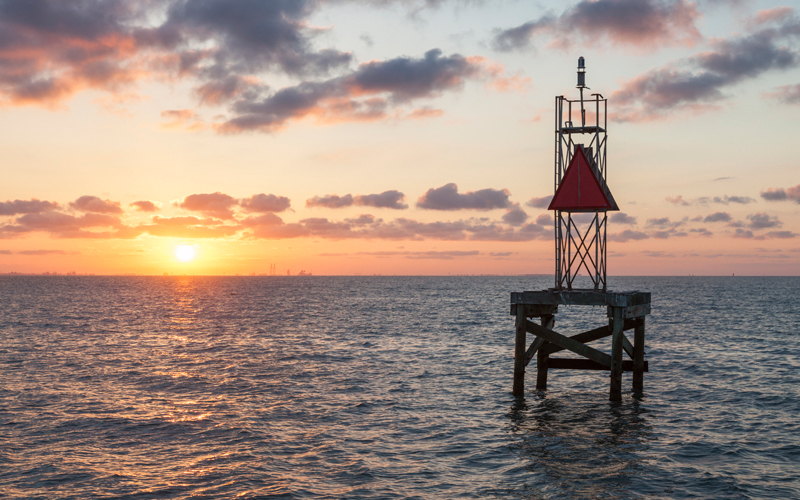USING DEEP LEARNING TO IMPROVE OUR RESPONSE TO NATURAL DISASTERS
by Yaffi Spodek | Monday, Nov 25, 2019
Together with Harbor Branch Oceanographic Institute, researchers at FAU’s College of Engineering and Computer Science have been awarded a $350,000 grant from the Gulf Research Program of the National Academies of Science, Engineering and Medicine. The grant, entitled “Loop Current System SSH and Subsurface Current Prediction with a Transfer Learning Approach,” proposes to apply a deep learning approach for modeling and predicting the Loop Current System (LCS) at the Gulf of Mexico.
What exactly is the LCS and what are the long-term impacts of this research? The LCS is warm water that travels up from the Caribbean and into the Gulf of Mexico. The current is also known as the Florida current since it flows through the Florida Strait, into the Gulf Stream, and heads north up the eastern coast of the U.S. From the south, the Gulf of Mexico is fed by a current of warm water from the Caribbean, which enters the Gulf between Mexico's Yucatan Peninsula and Cuba. This forms the Gulf Loop Current, which curves east and south along Florida's coast and exits through the Straits of Florida.
Understanding these dynamics and being able to predict the LCS is key to understanding the Gulf of Mexico’s full oceanographic system and many aspects of marine life and human activities in this region. That includes hurricane intensity, natural disaster responses, short-term weather anomaly predictions, offshore oil and gas operations, recreational and ecosystem services, and the entire Gulf Coast food chain and economy, which are all affected by the position, strength, and structure of the LCS and associated eddies. However, despite its significance, the LCS is one of the least understood oceanographic features in the Americas. And that is where FAU’s research team comes in.
“In recent years, in-situ data in critical locations of the LCS have become available to the community, significantly improving our understanding of LCS dynamics,” said Hanqi Zhuang, Ph.D., professor and interim chair of the Department of Electrical Engineering & Computer Science, and one of the project’s principal investigators. “Since this type of approach hinges on data density and quality, we believe that we can apply deep learning methods to predict the LCS subsurface dynamics, in particular LCS current speed, vertical structure and duration as specified by the recommendations of the NAS Gulf Research Program report. Our data-driven approach was successfully applied to train a prediction model, which forecasted LC eddy separation eight to twelve weeks in advance, including re-attachment during the shedding process.”
Dr. Zhuang is working together with principal investigators Laurent Chérubin, Ph.D., associate research professor at FAU’s Harbor Branch Oceanographic Institute, and James VanZwieten, Ph.D., assistant research professor at FAU’s Southeast National Marine Renewable Energy Center.
The goal of their project is to design a prediction model based on transfer learning to predict the LCS subsurface dynamics, which will help fill the gaps associated with the lack of continuous sub-surface measurements and predict the subsurface flow without having to rely completely on a physical model for any SSH anomaly of the LCS. The project will also explore the complexity of the dynamics of the flow structure dependence on depth through all of the phases of the LCS, which will provide a deeper understanding of the eddy formation and shedding processes.
“The Gulf Research Program awards $2 million in grants each year to seven new projects focused on improving our understanding of the Gulf of Mexico Loop System, and we are proud that our professors have been able to secure funding for this project,” said Stella Batalama, Ph.D., dean of FAU’s College of Engineering and Computer Science. “By applying our expertise in deep learning, we develop innovative, effective, and efficient solutions for the accurate prediction of the dynamic characteristics of the LCS system which can have a significant impact on the natural and manmade ecosystem in the Gulf of Mexico and beyond.”